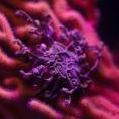-
Similar Content
-
Topics
-
Latest Update
-
7
Decommissioning Sales of 5f Reef Tank
Thanks for all the queries and it is overwhelming. I decided to close this thread for now to better structure how the decomm is going to take place progressively. Sorry that I may not be able to response to all and hope to seek your understanding that this will have to be carry out in stages to minimize disruption to the livestock. -
1
-
1
decom sale im nuvo20
IM NUVO 20 + Al hydra 26hd + Teco tk 500 + cabinet $450 Sent from my iPhone using Tapatalk -
0
WTS LSOH colony
Ttl 25 polyps Asking 1250 Nego if keen WA 98231072 从我的 iPhone 发送,使用 Tapatalk -
7
Decommissioning Sales of 5f Reef Tank
Pmed u Sent from my SM-S906E using Tapatalk
-








Recommended Posts
Join the conversation
You can post now and register later. If you have an account, sign in now to post with your account.